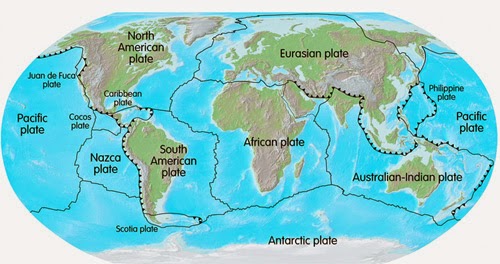A Smith friend (thanks, Dot!) sent this link to a University of California at Berkeley page which draws a timeline of evolutionary thought in a clear, spatial manner:
For live links, see the page below:
TIMELINE OF EVOLUTIONARY THOUGHT
The graphic is particularly intriguing because it includes both biologists and geologists.
The scientists are essentially grouped as non-Darwinians, Darwinians, and neo-Darwinians. And who doesn't enjoy a good Galapagos tortoise photograph:
The branch which caught my attention was the "Hopeful Monsters" tied to Richard Goldschmidt. (Of course, this branch is still under construction at the Berkeley site)...But, the connection between "Hopeful Monsters" or saltation in evolutionary biology to saltation in geology was too enticing to pass up. Saltation is the jumping over quickly from one creature a la macromutations (in biology) or one grain (in geology) to another. Fast evolution, fast geologic change vs slow evolution, slow gradual geologic change.
In general, both evolutionary biology and geology tend to change slowly over many generations or years. But there are times, as in the Scablands of Eastern Washington, where floods have occurred over a short time period (55 years at a time over a total of 2000 years) creating a landscape that changed relatively quickly:
As to "Hopeful Monsters," relatively rapid changes due to macromutations were proposed by Goldschmidt in 1940. Many neo-Darwinians dismissed his ideas, however.
On the subject of Goldschmidt, Donald Prothero in his book Evolution: What the Fossils Say and Why It Matters (2007) wrote:
"The past twenty years have vindicated Goldschmidt to some degree. With the discovery of the importance of regulatory genes, we realize that he was ahead of his time in focusing on the importance of a few genes controlling big changes in the organisms, not small-scales changes in the entire genome as neo-Darwinians thought. In addition, the hopeful monster problem is not so insurmountable after all. Embryology has shown that if you affect an entire population of developing embryos with a stress (such as a heat shock) it can cause many embryos to go through the same new pathway of embryonic development, and then they all become hopeful monsters when they reach reproductive age."
A paper by Page et al in 2010, showed that the Mexican axolotl (Ambystoma mexicanum) could be classified as a hopeful monster as it exhibits an adaptive and derived mode of development that has evolved rapidly and independently among tiger salamanders.
In both biology and geology, periods of rapid change make sense.
(It is unfortunate that some creationists have taken the "Hopeful Monsters" theory as meaning there are no transitional fossils and that "punctuated equilibrium" translates to no evolution. Punctuated Equilibrium is not the same thing as "Hopeful Monsters.")
Leaping lizards! That's a pretty hopeful looking monster.
With all good things saltational and not, I look forward to your thoughts,
Steph
(aka Word Woman)

















